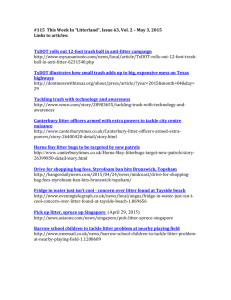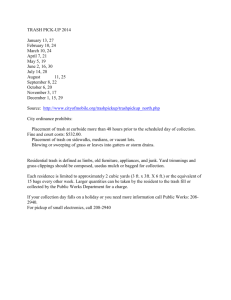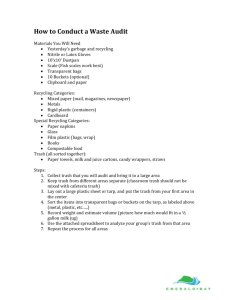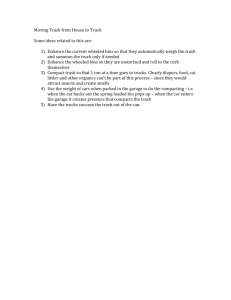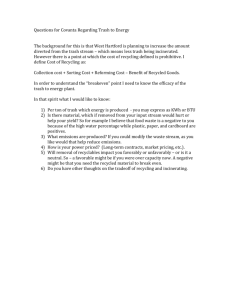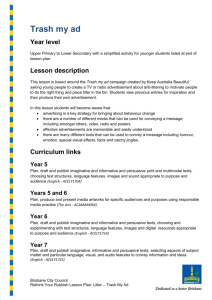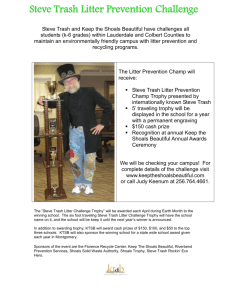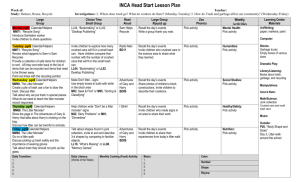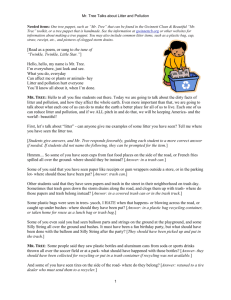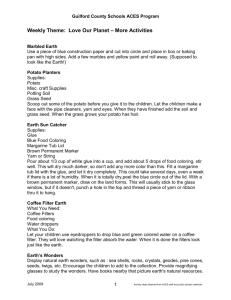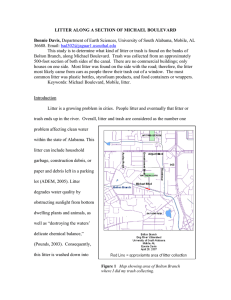Plastics in the Ocean Lesson and Art Project
advertisement
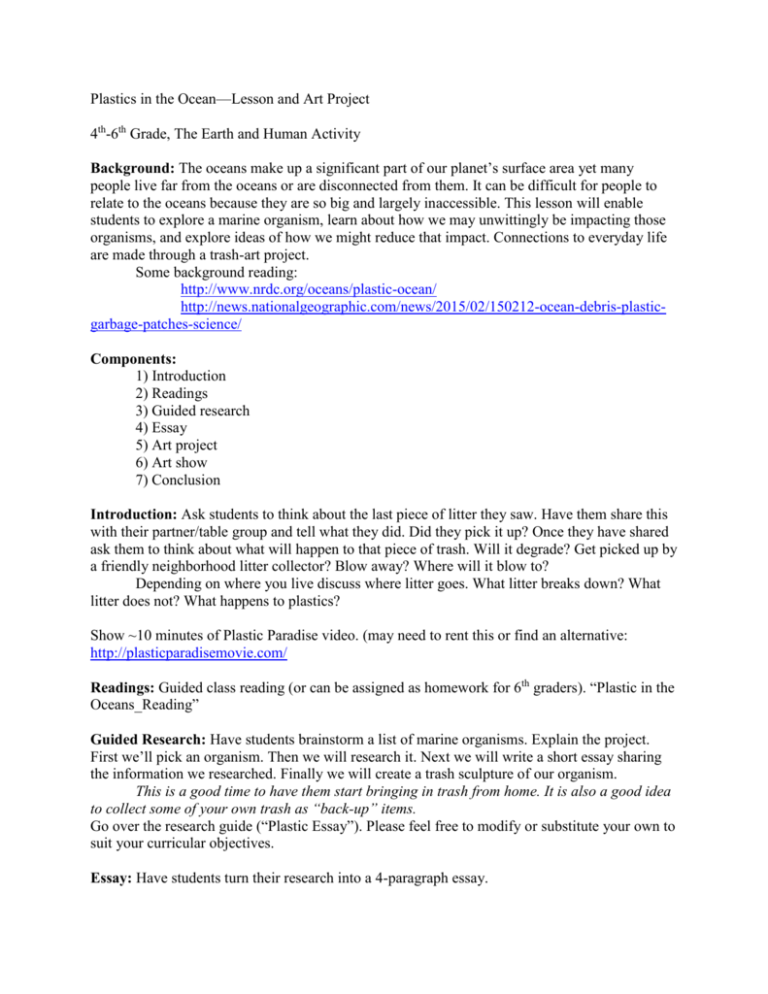
Plastics in the Ocean—Lesson and Art Project 4th-6th Grade, The Earth and Human Activity Background: The oceans make up a significant part of our planet’s surface area yet many people live far from the oceans or are disconnected from them. It can be difficult for people to relate to the oceans because they are so big and largely inaccessible. This lesson will enable students to explore a marine organism, learn about how we may unwittingly be impacting those organisms, and explore ideas of how we might reduce that impact. Connections to everyday life are made through a trash-art project. Some background reading: http://www.nrdc.org/oceans/plastic-ocean/ http://news.nationalgeographic.com/news/2015/02/150212-ocean-debris-plasticgarbage-patches-science/ Components: 1) Introduction 2) Readings 3) Guided research 4) Essay 5) Art project 6) Art show 7) Conclusion Introduction: Ask students to think about the last piece of litter they saw. Have them share this with their partner/table group and tell what they did. Did they pick it up? Once they have shared ask them to think about what will happen to that piece of trash. Will it degrade? Get picked up by a friendly neighborhood litter collector? Blow away? Where will it blow to? Depending on where you live discuss where litter goes. What litter breaks down? What litter does not? What happens to plastics? Show ~10 minutes of Plastic Paradise video. (may need to rent this or find an alternative: http://plasticparadisemovie.com/ Readings: Guided class reading (or can be assigned as homework for 6th graders). “Plastic in the Oceans_Reading” Guided Research: Have students brainstorm a list of marine organisms. Explain the project. First we’ll pick an organism. Then we will research it. Next we will write a short essay sharing the information we researched. Finally we will create a trash sculpture of our organism. This is a good time to have them start bringing in trash from home. It is also a good idea to collect some of your own trash as “back-up” items. Go over the research guide (“Plastic Essay”). Please feel free to modify or substitute your own to suit your curricular objectives. Essay: Have students turn their research into a 4-paragraph essay. Art Project: If you type “plastic trash art” into an image search engine you’ll find many examples of trash sculptures. For example: These can be helpful for students to formulate a mental image of their creation and may be worth showing when you ask them to collect trash for this project. Have them make a sketch plan of their sculpture, including what materials they will use, before letting them pull out their materials. Helpful items to have on hand: Duct tape, box cutters. Papier-mâché and paints can also be good additions to this project. When students have finished their creation have them write an “Artist’s statement” Name of the Art Piece:___________________________________________________________ Artist:________________________________________________________________________ Inspiration:____________________________________________________________________ ______________________________________________________________________________ ______________________________________________________________________________ Have them do a rough draft, then the final. These are really nice if mounted on black construction paper. Art Show: Once students are done have a place to arrange or hang the pieces. Conclusion: Potential solutions? A student in Denmark is pursuing a project to clean up the Pacific Garbage patch. http://www.theoceancleanup.com/ Describe the plan to the students then ask them to discuss whether or not they think that it will work. What might work better? What problems do they see with the design? What are some strengths of the design? Share some of the ways that the organisms they researched are affected by pollution. Did anyone’s organism benefit? Read “Jellyfish Buffet”. Show supplementary videos to see what the birds are seeing. Optional: A short reflective write- For example: do you think there is something small each person could do that might help reduce the problem of plastics in the ocean? If so what is it? If not why not?
